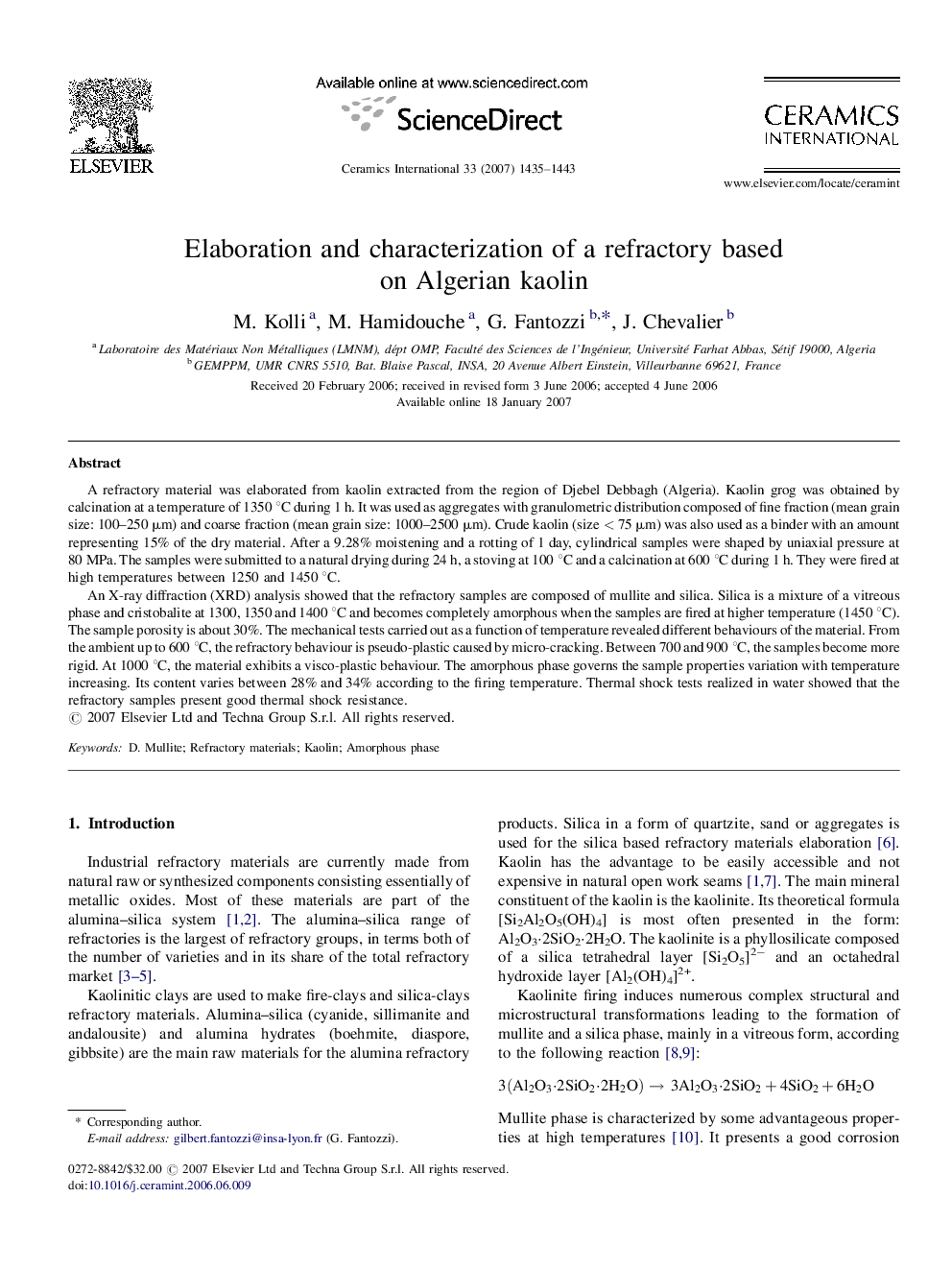| Article ID | Journal | Published Year | Pages | File Type |
|---|---|---|---|---|
| 1465513 | Ceramics International | 2007 | 9 Pages |
A refractory material was elaborated from kaolin extracted from the region of Djebel Debbagh (Algeria). Kaolin grog was obtained by calcination at a temperature of 1350 °C during 1 h. It was used as aggregates with granulometric distribution composed of fine fraction (mean grain size: 100–250 μm) and coarse fraction (mean grain size: 1000–2500 μm). Crude kaolin (size < 75 μm) was also used as a binder with an amount representing 15% of the dry material. After a 9.28% moistening and a rotting of 1 day, cylindrical samples were shaped by uniaxial pressure at 80 MPa. The samples were submitted to a natural drying during 24 h, a stoving at 100 °C and a calcination at 600 °C during 1 h. They were fired at high temperatures between 1250 and 1450 °C.An X-ray diffraction (XRD) analysis showed that the refractory samples are composed of mullite and silica. Silica is a mixture of a vitreous phase and cristobalite at 1300, 1350 and 1400 °C and becomes completely amorphous when the samples are fired at higher temperature (1450 °C). The sample porosity is about 30%. The mechanical tests carried out as a function of temperature revealed different behaviours of the material. From the ambient up to 600 °C, the refractory behaviour is pseudo-plastic caused by micro-cracking. Between 700 and 900 °C, the samples become more rigid. At 1000 °C, the material exhibits a visco-plastic behaviour. The amorphous phase governs the sample properties variation with temperature increasing. Its content varies between 28% and 34% according to the firing temperature. Thermal shock tests realized in water showed that the refractory samples present good thermal shock resistance.
